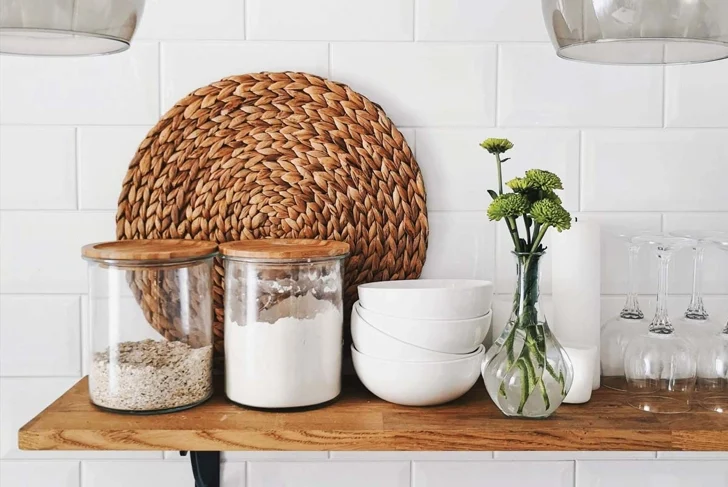A Greener Kitchen: Simple Swaps for a More Eco-Friendly Space
Looking to make your daily life a little more sustainable? Your kitchen is one of the best places to begin. It’s where decisions about food, waste, and energy happen every day—so small changes here can ripple out to have a big environmental impact. From the way you store leftovers to how you brew your morning coffee, adopting eco-conscious habits in the kitchen doesn’t require a complete overhaul—just a bit of intention and creativity.
Ready to give your kitchen a green makeover? Here’s a practical guide to help you get started.
Rethinking Food Storage
Food waste is a massive global issue, and how you store your ingredients and leftovers plays a big role in keeping food fresher, longer. It’s time to break up with single-use plastics and embrace reusable options that are better for the planet—and your budget.
Ditch the Plastic Wrap
Skip the cling film and reach for reusable alternatives. Wax wraps made from beeswax or plant-based wax are a popular option and can be molded around food or containers with the warmth of your hands. Cloth bowl covers and silicone lids are also practical choices. For an ultra-simple solution, just place a plate over a bowl—zero waste, zero fuss.
Upgrade Your Containers
You don’t need to rush out and buy a new set—chances are, you already own the most sustainable storage option. But if you are looking to replace or expand your collection, choose glass or stainless steel containers. They’re durable, non-toxic, and free from bisphenol A (BPA) and its lesser-known cousin, BPS, which may carry similar hormonal risks. When choosing plastic, avoid anything labeled “#7” or “polycarbonate,” as they may still contain these chemicals.
Smart Choices for Kids and Babies
Raising little ones means lots of mealtime gear—and lots of opportunities to go greener.
Glass and stainless steel remain top choices for baby bottles and kids’ cups. They’re safe, long-lasting, and easy to sanitize. Silicone is another popular option, especially for its flexibility and fun colors. While food-grade silicone is generally considered safe, it doesn’t break down in the environment and isn’t easily recyclable, so it’s best to use it thoughtfully and keep it for the long haul.
Mindful Grocery Shopping
An eco-friendly kitchen starts with what you bring into it. The packaging on your groceries matters more than you might think—and knowing how to navigate the options can help cut down on waste.
Canned Goods
While aluminum cans are widely recyclable, the linings inside them may contain BPA or similar chemicals. Look for labels that say “BPA-free,” or check the company’s website for more information.
Glass Packaging
Glass is non-toxic and can be reused or recycled. However, not every community accepts glass curbside, so it’s worth checking local guidelines. Some forward-thinking brands even offer take-back programs that clean and reuse their glass containers—look out for these whenever possible.
Plastic Packaging
Plastics are tricky—some types are recyclable, others aren’t. In general, #1, #2, and #5 plastics are more commonly accepted in recycling programs, while #3, #4, #6, and #7 are often not. Still, reducing your reliance on plastic is always better than trying to recycle it.
Go Package-Free
The ultimate eco win? Skip the packaging altogether. Refill stores and bulk sections let you bring your own containers or cloth bags. Once home, simply transfer everything into airtight jars or bins. It’s a low-waste, low-stress way to shop.
Gear That Goes the Distance
Whether you’re a culinary minimalist or gadget collector, the tools you use in your kitchen matter. Choosing durable, non-toxic equipment helps reduce waste and creates a healthier home.
Cookware
Nonstick pots and pans are convenient, but they raise some environmental and health concerns. Chemicals like PFOA, once commonly used in nonstick coatings, have been linked to health issues in animal studies and are persistent in the environment. While most cookware today is PFOA-free, it’s still worth treating nonstick surfaces gently or opting for long-lasting alternatives.
Cast iron and stainless steel pans may require a bit more care, but they can last for decades. They also avoid the chemical concerns associated with nonstick coatings—and offer superior cooking performance once you get the hang of them.
Coffee Makers
If you love your daily cup of coffee, consider how you brew it. Single-use pods are incredibly convenient but create a significant amount of plastic waste. Better options include pour-over systems (with reusable filters), French presses, or stovetop percolators. Bonus points for choosing organic and fair-trade coffee to support both the environment and the people who grow it.
Start Small, Think Big
Going green in the kitchen doesn’t mean tossing everything out and starting from scratch. In fact, the most sustainable choice is often to use what you already have. From there, begin making thoughtful swaps as things wear out or need replacing. Choose items built to last, materials that are safe for your family, and brands that are transparent about their practices.
Every time you choose to reduce waste, opt for a safer material, or support a more ethical product, you’re voting for a healthier planet—and a healthier kitchen.
It all adds up. And it all starts at home.

